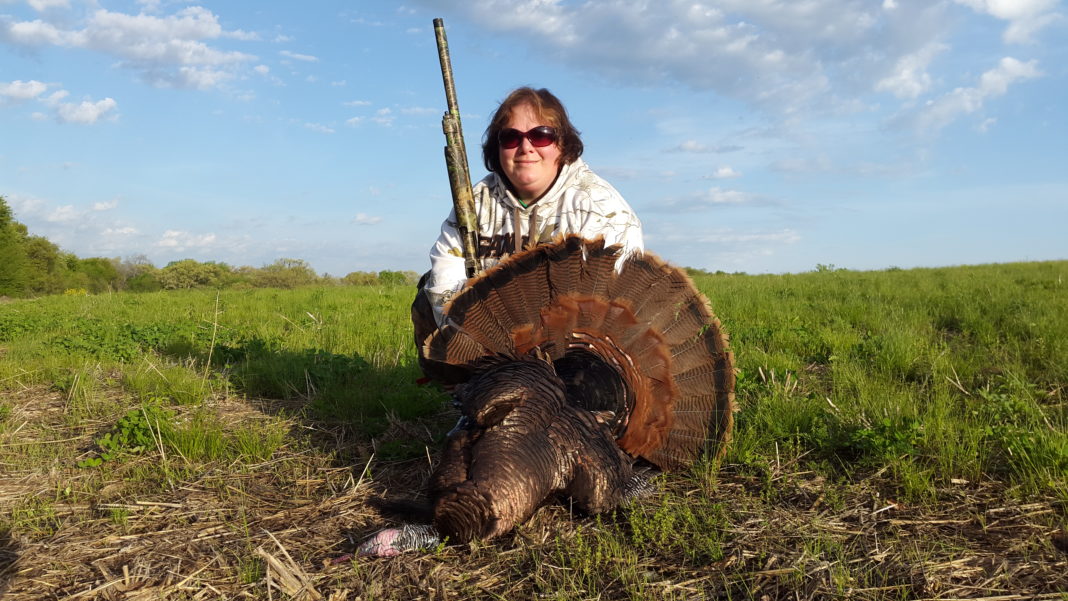Experienced turkey hunters know that in order to consistently harvest longbeards season after season, work must be done long before the season opens. Scouting for turkeys is the key to their success.
It is all right if you fall in the category of hunters that turn turkey scouting into a year-round adventure. Part of my scouting regiment involves keeping a detailed journal throughout the year. Beginning when turkey season ends and throughout the winter, I keep track of where I spot birds.
As the date on the calendar gets closer to April, I pay extra close attention to what the birds are doing. This is the time of the year birds begin to migrate from their winter homes to their breeding grounds.
I keep more detailed accounts in my journal of what the birds are doing. I want to know where I see turkeys, the time of day, weather activity, when the toms gobble, what they are eating, where they are dusting, and where they roost.
The last week before the season opens is when I seek out the most up-to-date information. Things are not going to change much in that week. Learn what you can and have the confidence to use it to harvest a bird.
Hunters are not going to find birds the same place on the first day of April than on the first day of December. However, the birds rarely travel more than 2 miles from winter to breeding grounds. The key is to find the hens in the spring and gobblers will not be far. Like during the whitetail rut when you find the does, the bucks will not be far behind. There is no better decoy than a live hen.
Scouting during the winter has benefits other than locating birds. A great benefit is learning the lay of the land or at least getting a refresher course if it has been a while since you were on it. Another advantage is having plenty of time to obtain permission to hunt ground on which you have located turkeys.
It is good to know where obstacles are located on the land you intend to hunt and that could cause the birds to get hung up. By knowing where the obstacles (blowdowns, rivers, creeks, and fencerows) are located, you can set up accordingly so the obstacles never become a factor.
Too many hunts are ruined before the hunter ever gets in position in the morning while the birds are still on the roost. Hunters do not plan their entry routes to allow them to approach the hunt area quietly and without being seen. Search for dry creek beds, old logging roads, and even game trails to conceal your movement and mask your noise.
Finding where birds are can be is as simple as networking. Put your communication skills to the test and talk with people who travel rural roads daily. UPS drivers, mail carriers, school bus drivers, game wardens, and farmers are examples of people to ask. They see turkeys and other wildlife daily or at least talk to people that do. They are a good source of information for potential hunting hot spots.
River and creek bottoms are good places to start scouting. They green up first and turkeys are attracted to the growth and insects. Turkeys like the security of the thickets and cool comfort provided by cedar trees often found in those bottoms.
Turkeys are always going to eat. Again, when you find hens feeding, toms will be very close even if you don’t see them. Not only are birds eating insects and greens; they also will dine on leftover acorns that become available once the snow melts off. If you find fresh scratchings in the leaves, turkeys are in the area and will return soon.
Late in the morning, set up near dusting bowls if the birds did not cooperate at fly down and offer you a deadly shot. Turkeys like to dust to get the ticks, mites, and other bugs off them.
Not only will birds seek out river and creek bottoms for food, comfort, and security, but it is also a favorite roosting location. Turkeys love to roost over water. They prefer big trees that have horizontal limbs close to and even over the water. Birds prefer to fly down to roost, so it helps if the trees are below the ridge top.
It is not hard to find where turkeys roost. About a week before the season I go out to watch and listen. Often, I can see and hear birds fly up to roost. Look for telltale signs like wing and tail feathers and piles of droppings under roosting trees. A lot of signs mean the trees are used often. Stay away once you find a roost until it is time to hunt.
Most of the time gobbler droppings are j-shaped and hen droppings are more rounded. Feathers from a gobbler have a black tip and a hen’s body feathers have a brown tip.
If you can get out and scout before the season and even keep tabs on birds year-round, you will have a huge advantage over other hunters. While everyone else is looking for birds on opening morning, you will already have them in your sights.



















![The Best Deer Camp Chili [VIDEO] Deer Chili Ingredients, Tomatoes, Chili Spices](/wp-content/uploads/2015/10/Deer-Chili-Deer-Camp-Recipe-218x150.jpg)
![How to Call Elk Early in the Season [VIDEO]](/wp-content/uploads/2016/08/byers003-218x150.jpg)




![Idiots Disturb Hunter: How Would You Have Handled It? [VIDEO]](/wp-content/uploads/2015/10/DSC00110-e1474487693878-100x70.jpg)
![Albino Buck Shocked to Shed His Antlers [VIDEO]](/wp-content/uploads/2015/10/AlbinoDeer-100x70.jpg)